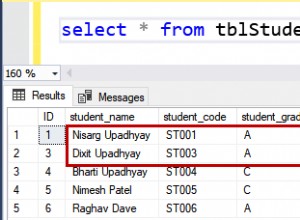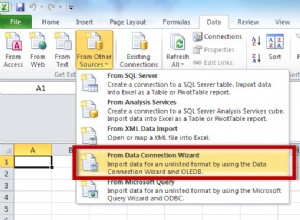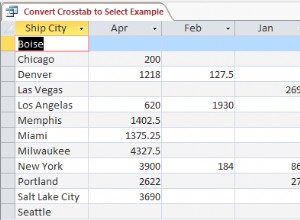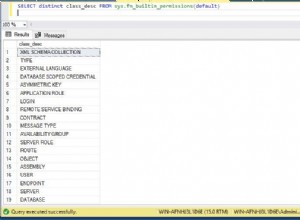Prova sqlparse modulo.
Esempio aggiornato:lasciare commenti all'interno di valori di inserimento e commenti all'interno di blocchi CREATE FUNCTION . Puoi modificare ulteriormente per ottimizzare il comportamento:
import sqlparse
from sqlparse import tokens
queries = '''
CREATE FUNCTION func1(a integer) RETURNS void
LANGUAGE plpgsql
AS $$
BEGIN
-- comment
END;
$$;
SELECT -- comment
* FROM -- comment
TABLE foo;
-- comment
INSERT INTO foo VALUES ('a -- foo bar');
INSERT INTO foo
VALUES ('
a
-- foo bar'
);
'''
IGNORE = set(['CREATE FUNCTION',]) # extend this
def _filter(stmt, allow=0):
ddl = [t for t in stmt.tokens if t.ttype in (tokens.DDL, tokens.Keyword)]
start = ' '.join(d.value for d in ddl[:2])
if ddl and start in IGNORE:
allow = 1
for tok in stmt.tokens:
if allow or not isinstance(tok, sqlparse.sql.Comment):
yield tok
for stmt in sqlparse.split(queries):
sql = sqlparse.parse(stmt)[0]
print sqlparse.sql.TokenList([t for t in _filter(sql)])
Uscita:
CREATE FUNCTION func1(a integer) RETURNS void
LANGUAGE plpgsql
AS $$
BEGIN
-- comment
END;
$$;
SELECT * FROM TABLE foo;
INSERT INTO foo VALUES ('a -- foo bar');
INSERT INTO foo
VALUES ('
a
-- foo bar'
);




